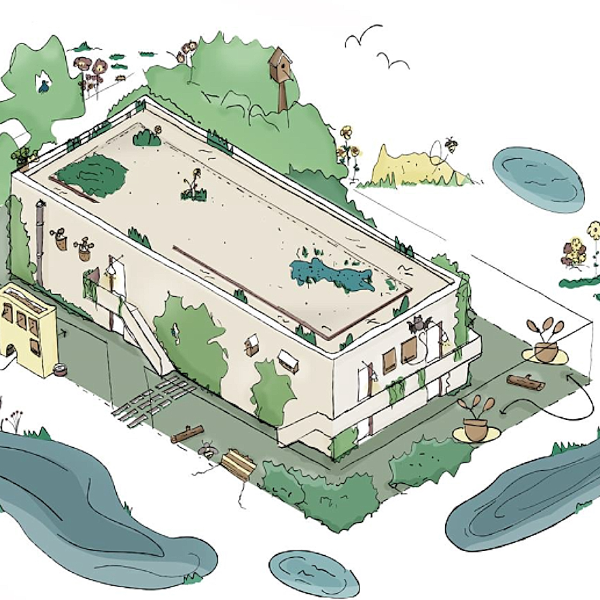Biodiversity menu for high-voltage substations

Biodiversity menu for high-voltage substations
The ESG strategy of grid operator Stedin details optimal sustainability measures for business operations to reduce carbon emissions and boost circularity and biodiversity. Stedin commissioned Witteveen+Bos to study how to standardise nature-inclusive design for high-voltage substations. This produced the ‘Biodiversity Menu’ of standard solutions.
Stedin’s projects contribute to the energy transition and help reduce the national carbon footprint. At the same time, construction impacts the environment in the materials and energy it uses and in its carbon emissions. After construction, high-voltage substations still affect the natural world in the form of unnatural land use, physical barriers to animal movements, and sometimes also noise pollution and electromagnetic fields.
Stedin wants to enshrine biodiversity in the design and construction of (high-voltage) substations, with standard solutions for biodiversity measures. This also links up with the growing demand from municipalities to incorporate substations in a nature-inclusive way, with respect for biodiversity.
The longlist of nature-inclusive measures (Infranature) served as the starting point for the Biodiversity Menu. Stedin commissioned Naturalis to draft this list, available here (in Dutch). Ultimately they opted not to prepare a single shortlist for high-voltage substations, but rather a different shortlist for each category. Naturalis helped devise this approach. Four questions for nature-inclusive design.


Four questions for nature-inclusive design
1. At what level could this project/site impact the ecosystem?
System, network or object level.
2. What is possible in this project?
Take into account factors such as business operations, technology, the site, and regulations (the Environment and Planning Act ‘Protected Areas’ (Natura 2000 areas), ‘Protected species’, and ‘Temporary Nature’, etc.).
3. What is needed for a custom design that fits in with the site and is ecologically functional?
Consider the measures, species and interrelations specific to the local site.
4. What are the dimensions and quantities for each nature-inclusive measure?
Specific measures for the specific high-voltage substation.
An analysis based on these questions makes it easier to arrive at a design that improves biodiversity. Including biodiversity as a design goal alongside other project objectives results in an integrated multifunctional design.
We distinguish three categories of measures for high-voltage substations, based on feasibility and added ecological value:
- Always possible
- With space onsite (medium to large sites)
- Only on the building (small site)
Examples of ‘Always possible’ measures:
- Leave leaf cover on the ground
- Eco-friendly green management and weed control
- Hedges or bushes with fencing
- Dead hedges, shelters for small animals
- Semi-paving instead of paving
- Fauna passages
- Mobile planters
Examples of ‘Medium to large site’ measures:
- Do not raise or disturb soil
- Varied, biodiverse planting
- Wadis (seasonal riverbeds) with vegetation
- Ponds with or without vegetation
Examples of ‘Small site’ measures:
- Green (e.g. sedum) roof
- Brown roof
The report discusses and explains these measures and many more.

Opportunity abounds
New high-voltage substations offer numerous opportunities to boost local biodiversity. The Biodiversity Menu gives policymakers, designers and technical professionals a clear roadmap to integrate biodiversity into high-voltage substation projects. For instance, they can make informed decisions to maximize nature-inclusive use of increasingly limited land, within the frameworks and limitations of business operations, technology, safety, management, maintenance and cost. Nature-inclusive design offers many other benefits besides biodiversity, such as reducing heat stress, flooding, and drought.
Want to know more?

